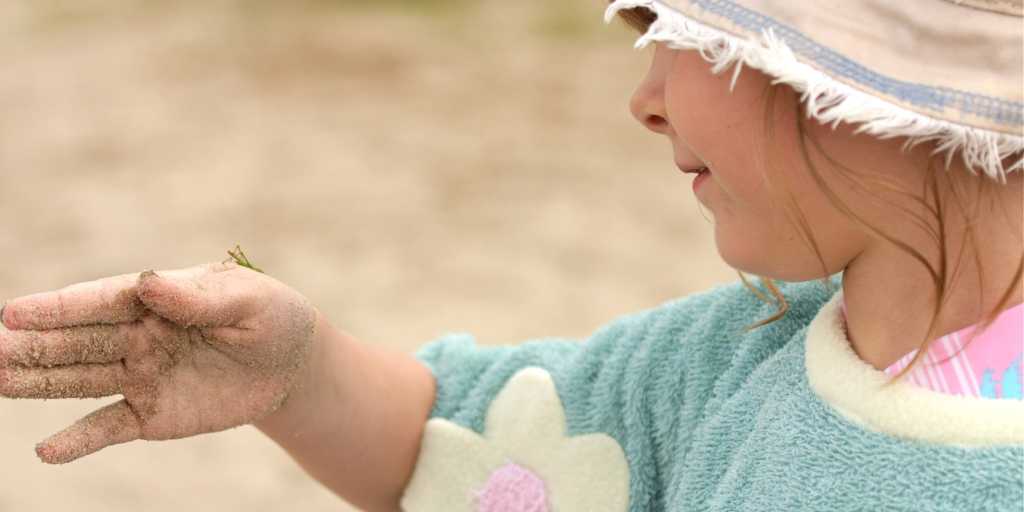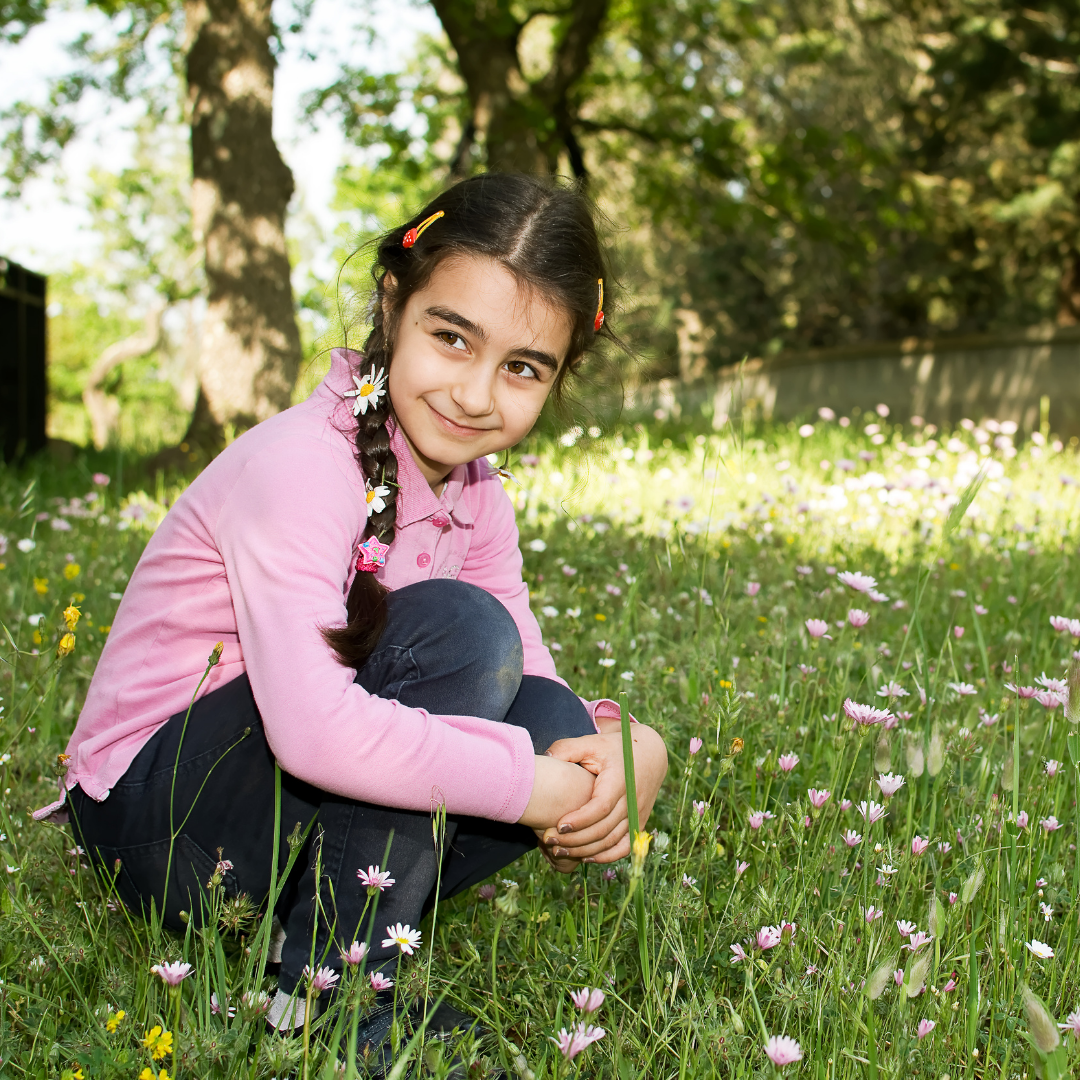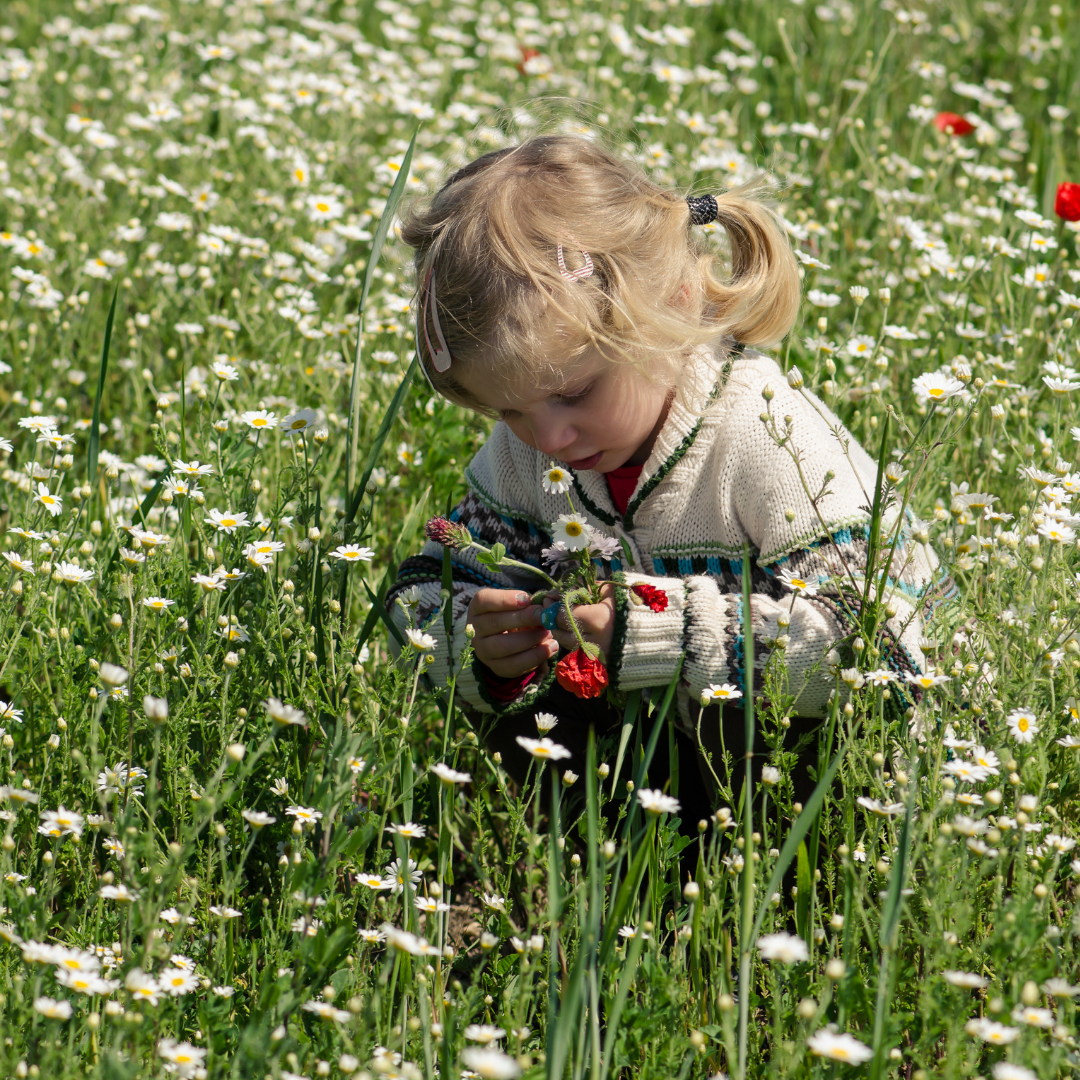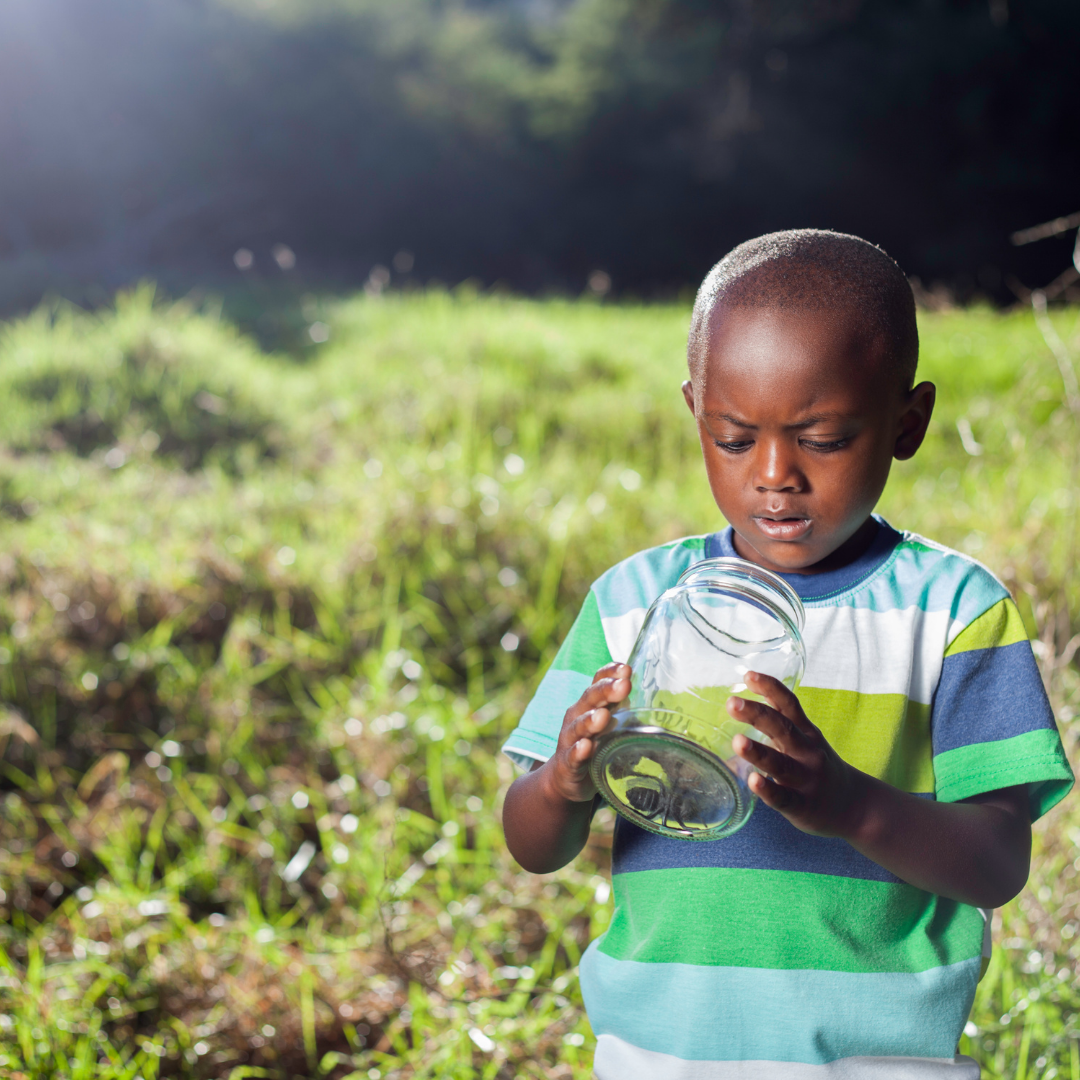
Kathryn Swegart explores how children can benefit from informal and fun outdoor nature study.
One summer day I undertook a wildlife study with my children. It was a simple endeavor that required a glass jar with a ventilated top, twigs for an insect perch, and a live grasshopper. The first step was to catch a grasshopper: not an easy task. Like a beagle in search of a rabbit, we focused on one subject and followed it until the little creature grew tired. We snatched it up only to be squirted with brown “tobacco juice” as a warning. Undeterred, we stuck it in the jar and observed his peculiar appearance.
Its face has a droll expression, complete with compound eyes located high on its head and powerful jaws, perfect for chewing leaves. Fascinated, we watched the grasshopper chew a leaf methodically, much like you or I might eat corn on the cob. He climbed up the side by means of microscopic hairs that secrete a sticky fluid.

Little did I realize that this nature study, undertaken several years ago, was therapeutic for my children.
In 2005, journalist Richard Louv published a landmark book Last Child in the Woods: Saving Our Children from Nature Deficit Disorder. The book struck a chord with parents and researchers who noticed that children were spending less time exploring the great outdoors and more time sitting in front of computer screens, mesmerized by virtual images. Louv explains that nature deficit disorder is a phrase that he coined and is not an official diagnosis.
Since Last Child in the Woods was written, over a thousand studies substantiate his theory. Louv writes,
This expanding body of scientific evidence suggests that nature-deficit disorder contributes to a diminished use of the senses, attention difficulties, conditions of obesity, and higher rates of emotional and physical illnesses.
What could our lives and our children’s lives be like if our days and nights were as immersed in nature as they are in technology?

Now that is a question to ponder. The good news is that help is out there. In 2015, Louv wrote a book called Vitamin N, offering 500 ways to connect with nature. I recommend Handbook of Nature Study by Anna Botsford Comstock. It is a treasury of information and simple activities that range from studies of birds to plants, insects to amphibians, concluding with a study of earth and sky. Comstock’s classic book is bound to capture the curiosity of both children and adults.
Careful study of nature can also spark a child’s wonder at God’s creation. Summer is in full swing. It is the perfect time to grab a glass jar and catch a grasshopper that might be hiding in a meadow. Prepare to be surprised at lessons it might share.

Copyright 2021 Kathryn Swegart
Images: Canva Pro
About the Author

Kathryn Swegart
Kathryn Griffin Swegart is an award-winning author of Catholic books for children. Kathryn and her husband raised three children on a small farm in rural Maine. She is a professed member of the Secular Franciscan Order and contributor to Magnificat. Visit her website at KathrynSwegart.com.


.png?width=1806&height=731&name=CatholicMom_hcfm_logo1_pos_871c_2728c%20(002).png)
Comments